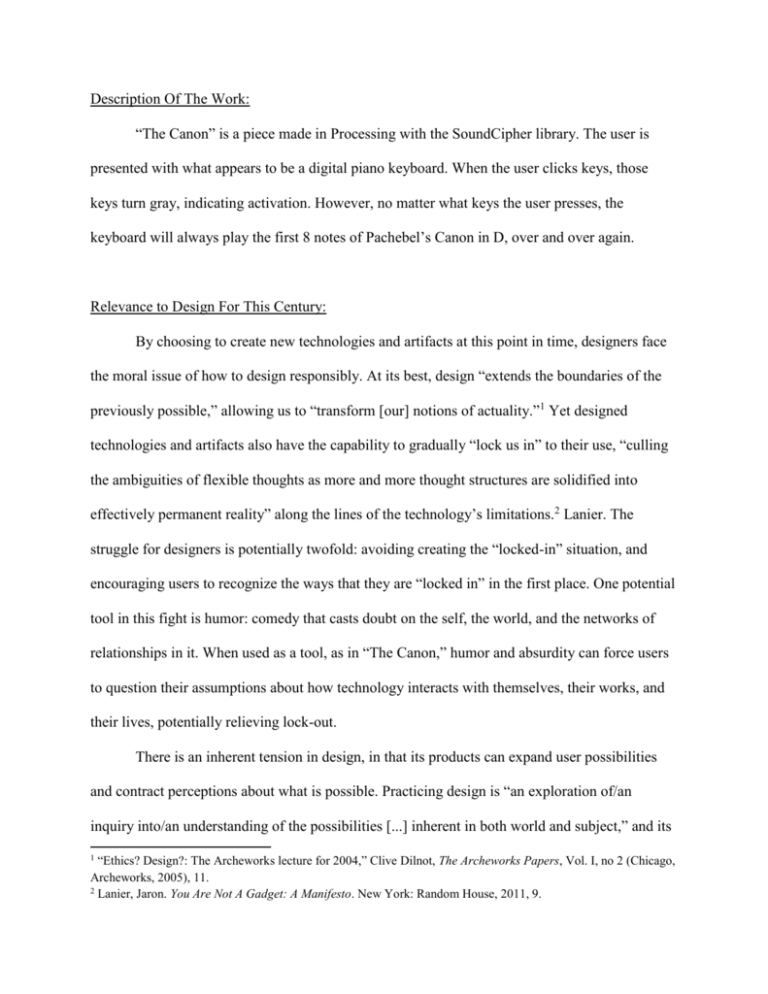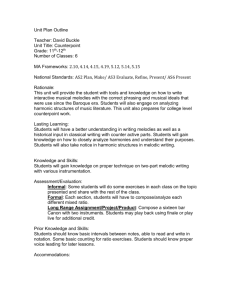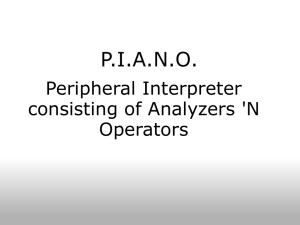Description Of The Work:
advertisement

Description Of The Work: “The Canon” is a piece made in Processing with the SoundCipher library. The user is presented with what appears to be a digital piano keyboard. When the user clicks keys, those keys turn gray, indicating activation. However, no matter what keys the user presses, the keyboard will always play the first 8 notes of Pachebel’s Canon in D, over and over again. Relevance to Design For This Century: By choosing to create new technologies and artifacts at this point in time, designers face the moral issue of how to design responsibly. At its best, design “extends the boundaries of the previously possible,” allowing us to “transform [our] notions of actuality.”1 Yet designed technologies and artifacts also have the capability to gradually “lock us in” to their use, “culling the ambiguities of flexible thoughts as more and more thought structures are solidified into effectively permanent reality” along the lines of the technology’s limitations.2 Lanier. The struggle for designers is potentially twofold: avoiding creating the “locked-in” situation, and encouraging users to recognize the ways that they are “locked in” in the first place. One potential tool in this fight is humor: comedy that casts doubt on the self, the world, and the networks of relationships in it. When used as a tool, as in “The Canon,” humor and absurdity can force users to question their assumptions about how technology interacts with themselves, their works, and their lives, potentially relieving lock-out. There is an inherent tension in design, in that its products can expand user possibilities and contract perceptions about what is possible. Practicing design is “an exploration of/an inquiry into/an understanding of the possibilities [...] inherent in both world and subject,” and its “Ethics? Design?: The Archeworks lecture for 2004,” Clive Dilnot, The Archeworks Papers, Vol. I, no 2 (Chicago, Archeworks, 2005), 11. 2 Lanier, Jaron. You Are Not A Gadget: A Manifesto. New York: Random House, 2011, 9. 1 ideal outcome is a mediation between nature and person such that the person has a whole new way of “being human.”3 Yet designed objects--especially digital ones--may ask that the user “accept in some corner of [their] brain” that they, too, may be conceived of as a digital device, which strips away the possibilities of the human’s analog world.4 Lanier discusses the creation of MIDI as an example: “Before MIDI, a musical note was a bottomless idea that transcended absolute definition. It was a way for a musician to think, or a way to teach and document music. It was a mental tool distinguishable from the music itself. Different people could make transcriptions of the same musical recording, for instance, and come up with slightly different scores.” “After MIDI, a musical note was no longer just an idea, but a rigid, mandatory structure you couldn’t avoid in the aspects of life that had gone digital.” “[MIDI] could not describe the curvy, transient expressions a singer or a saxophone player can produce. it could only describe the tile mosaic world of the keyboardist, not the watercolor world of the violin.”5 What Lanier is describing can be seen as the forgetting of what artificiality is: i.e. “perceptual similarity but essential difference.”6 The artificial is artificial because it can only adapt “relative to the same goals, to comparable ranges of external tasks.”7 The slow forgetting of this difference in users creates “locking in” that designers must equip themselves to solve. Humor in design can help combat this tendency to “lock in” by exploding these essential differences to absurd sizes, such that the user must confront the gap. Imbuing technology with unexpected characteristics (such as the sneezing radio by the Attenborough Design Group), extending technology to extremes (such as with Rube Goldberg devices), or removing its 3 Dilnot, 6. Lanier, 4. 5 Id, 7, 9. 6 Simon, Herbert A. "Understanding The Natural And Artificial Worlds." The Sciences of the Artificial. Cambridge, Mass.: MIT, 2008. 13. Print. 7 Id. 4 capabilities entirely (such as Claude Shannon’s “Ultimate Machine”)--all of these uses of humor startle the viewer into noticing the incongruity of the technology with the situations and goals in which it is placed. By becoming mindful of technology, a user is that much closer to questioning the technologies in their own lives, creating a space and a mindset conducive to “un-locking.” “The Canon” is designed to use humor to help facilitate such a process: by creating an absurd situation, it pushes people to consider the “essential differences” between the simulations they use and reality, and how not noticing such gaps may have caused them to limit themselves in the past. “The Canon” is a piano simulator that will play user input--the catch is that the user output is limited to what the computer decides should be the output—its own canon, so to speak The piece poses two questions to the user: is this an accurate simulation of a piano? If not, what would make it so? On its face, the answers seem obvious: no, “The Canon” is not an accurate simulation, because a real piano would respond to the keys that you press, rather than cycling through a predetermined pattern no matter what. Yet that answer is easily challenged. If “The Canon” did play notes in that way, would it be an accurate simulation of a piano? Perhaps in the most simplistic sense--and yet it would still lack the dynamics of volume that come with pressing a key gently or roughly. If it had that? It would still lack the ability to go out of tune. If it had that? It would lack the clicking sound that happens when each hammer strikes its string. Even if it had that, the most sophisticated piano simulator would lack the ability to have its material qualities altered: the most sophisticated piano simulator cannot be turned into one of John Cage’s prepared pianos, without the infinite possibilities of real-world items to stuff into it. “The Canon” is not meant to scorn technology for its inherent inability to fully simulate reality--the artificial is, after all, similarity with essential difference--but to get the user to remember that technology and artifices tend to work only relative to our goals and to comparable ranges of our tasks. A given simulation may be perfectly suitable for our needs: keeping with the idea of music, the user who does not have room for a real piano may infinitely prefer access to a simulated one; a user who needs a piano that is always in tune may greatly prefer one based on MIDI notes. What “The Canon” aims to do is to remind us that we should not default to assuming that this will be the case. A professional musician looking to expand the boundaries of his medium would do well to exploring the physical realities of an actual piano. Designers in our time struggle with the dual nature of technology as both a source of opportunity and a source of creeping limitation. One valuable tool in a designer’s arsenal may be humor. By presenting humorous artifacts and technologies, designers can cast doubt on what users previously thought they knew about how technology interacts with their works and their lives, helping to prevent “lock-out” at the source: the user’s mind.








